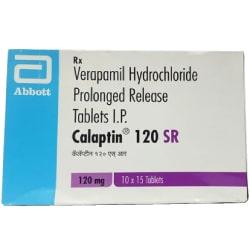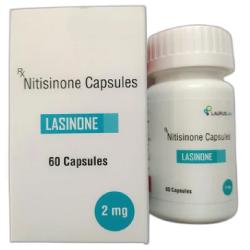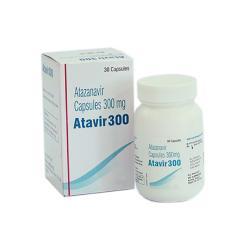Description
Verapamil Tablet is a calcium ion influx inhibitor, also known as a calcium ion antagonist or slow-channel blocker. It can be used either on its own or in conjunction with other antihypertensive therapies to treat mild-to-moderate hypertension and renal hypertension.
For the prevention and treatment of angina pectoris, including its variation.
To lower the ventricular rate in atrial fibrillation/flutter and to treat and prevent paroxysmal supraventricular tachycardia. When treating atrial fibrillation or flutter in individuals with Wolff-Parkinson-White syndrome, verapamil tablet should not be utilised.
Dosage and Side Effects
- Verapamil Tablet’s recommended dosage entails precise adherence—taken 3 to 4 times daily, with or without food. The scored 80 mg tablets allow for division to obtain a 40 mg dose, but both halves must be used within 24 hours or discarded.
- Angina treatment typically involves 80 to 120 mg thrice daily, although 40 mg thrice daily may suit patients with heightened verapamil tablet response (e.g., reduced hepatic function, elderly). Dosage adjustment should prioritize therapeutic efficacy and safety, assessed around eight hours post-dose, with potential increases at daily or weekly intervals until optimal response.
- For arrhythmias, dosages range from 240 to 320 mg daily (divided doses) in digitalized patients with chronic atrial fibrillation. Prophylaxis of PSVT (non-digitalized patients) involves 240-480 mg daily (divided doses). Maximum effects manifest within the initial 48 hours.
- In managing essential hypertension, dosing should be personalized. Initial monotherapy usually begins at 80 mg thrice daily (240 mg daily), with no evidence supporting doses beyond 360 mg. Consider initiating titration at 40 mg tablets thrice daily for responsive groups (e.g., elderly, smaller stature). Antihypertensive effects emerge within a week, guiding upward titration based on efficacy.
Commonly reported Verapamil tablet side effects encompass constipation, nausea, low blood pressure, dizziness, and headache.
FAQ's
What is Verapamil HCL?
Verapamil hydrochloride tablets, categorized as a calcium channel blocker, functions by relaxing heart and blood vessel muscles. It is employed in managing hypertension (high blood pressure), angina (chest pain), and specific heart rhythm irregularities.
What type of medication is Verapamil HCL?
Verapamil HCL is a distinct form of calcium channel blocker medication.






